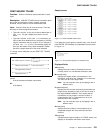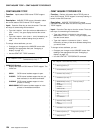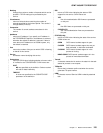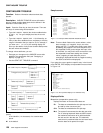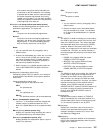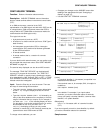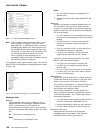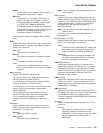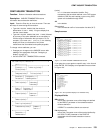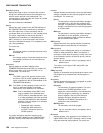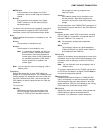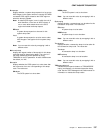CEMT INQUIRE TERMINAL
CReate
If the terminal is not in session, CICS acquires it if
it is needed to satisfy an ATI request.
NOCreate
If the terminal is not in session, CICS does not
acquire it to satisfy an ATI request. A session
must be started by, for example, a logon request
or a CEMT SET TERMINAL ACQUIRED
command before the ATI request can be satisfied.
If NOCREATE is set for an LU6.1 ISC session and
there are no allocatable sessions left, the
connection is placed OUTSERVICE.
You can rest this value by overtyping it with a different
value.
Nature
displays the nature of the terminal—that is, whether it is
a physical device or a session; and whether it is local or
remote. The values are:
RTerminal
The terminal is a remote device.
RSession
The terminal is a session of a remote connection.
Session
The terminal is an ISC or IRC session.
Local
The terminal is directly attached to this system
and is a physical device or a function of a cluster
controller.
NEtname(
value
)
displays an 8-character network name.
For a physical terminal, the Netname is the name by
which this terminal is known to VTAM.
For ISC sessions, it is the name by which the session
(or group of sessions) is known to VTAM.
For IRC sessions, it is the name used by the connected
region to log on to the interregion communication
program (DFHIRP).
For a remote terminal, it is the name by which the
terminal is known to the VTAM in the remote region.
(For a remote terminal routed from a pre-CICS
Transaction Server for OS/390 region, Netname is
blank.)
Pagestatus
displays whether pages after the first in a series are
written to the terminal on request from the operator or
automatically. The values are:
PAgeable
Pages are written on request.
AUtopageable
Pages are written automatically.
Note: You can reset this value by overtyping it with a
different value.
PRiority(
value
)
displays a 3-character string identifying the priority of a
terminal relative to other terminals. The priority of a task
is the sum of the transaction priority, the terminal priority,
and the operator priority. Priority has no meaning for
terminals that are ISC sessions being used as
alternative facilities.
Note: You can reset this value by overtyping it with a
different value.
The value is in the range 0–255, where 255 is the
highest priority.
Purgetype (
input only field
)
specifies whether transactions running with the named
terminal are to be purged. The values are:
Purge
Transactions will be terminated only if system and
data integrity can be maintained. A transaction is
purged if its definition specifies SPURGE=NO.
Forcepurge
Transactions are to be purged immediately. This
can lead to unpredictable results and should be
used only in exceptional circumstances.
REMotesystem(
value
)
displays the 4-character name of a connection, if the
subject of the inquiry is a remote terminal. The named
connection can be either a connection entry that links
toward the terminal-owning region (TOR), or an indirect
connection that provides the netname of the TOR.
Otherwise this field is blank.
RNAme(
value
)
displays the 4-character name by which this terminal is
known in the system in which it is defined (the TOR).
RNAME applies only to terminals defined as remote; for
others, blanks are displayed.
RNEtname(
value
)
displays the 8-character netname of the owning TOR, if
the subject of the inquiry is a remote terminal. If this field
is blank and the terminal is remote, the indirect
connection, displayed in REMOTESYSTEM, contains the
netname of the TOR.
Servstatus
displays whether the terminal is available for use. The
values are:
Inservice
The terminal is available for use. For VTAM,
Ins(ervice) means that the terminal can be
ACQUIRED. For IRC sessions, Ins(service) means
that the connection to the MRO partner is
INSERVICE.
Chapter 11. Master terminal CEMT 131



